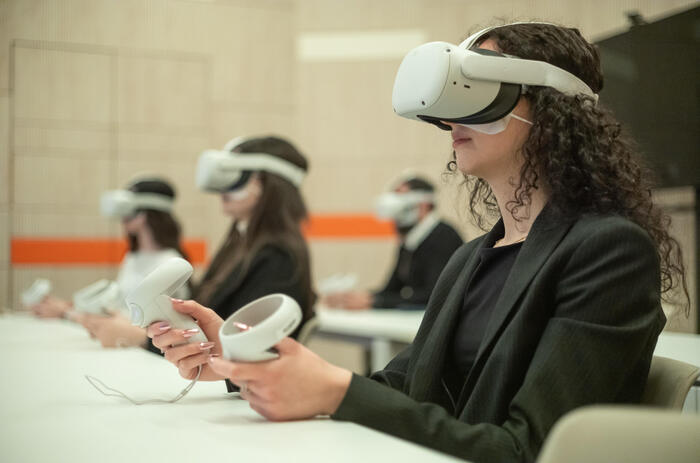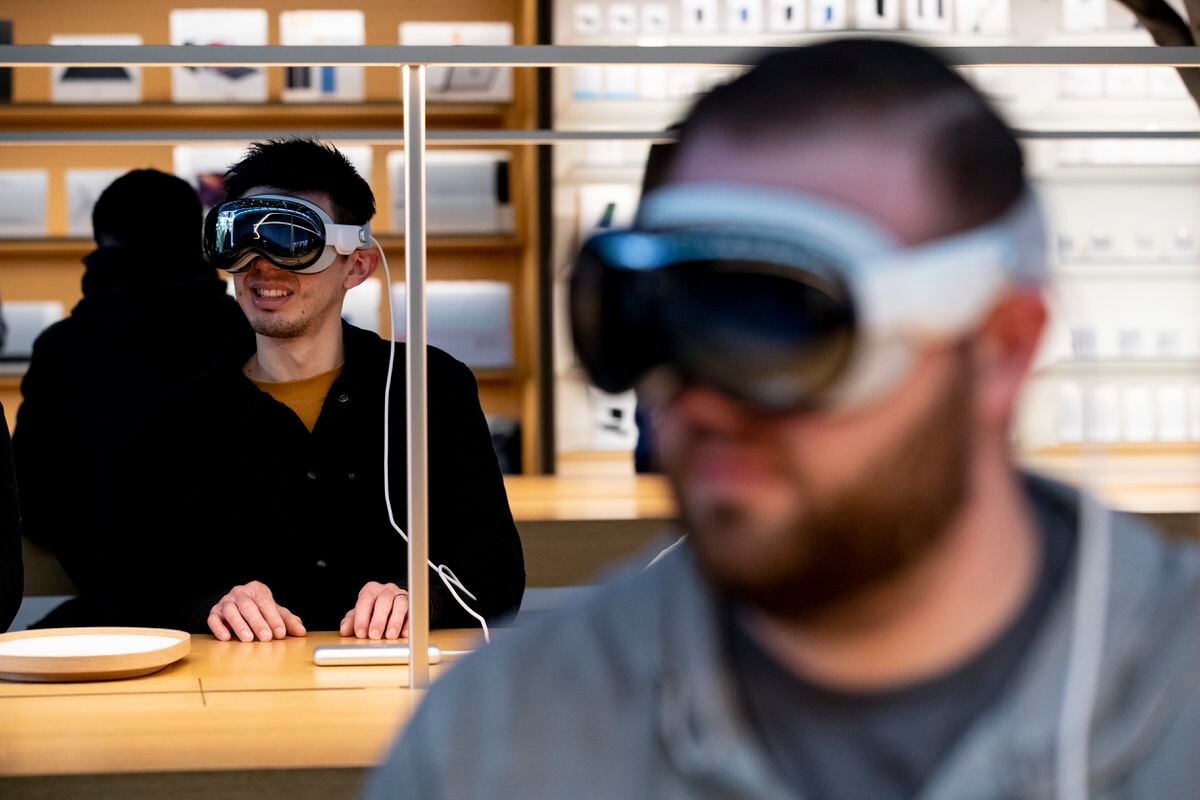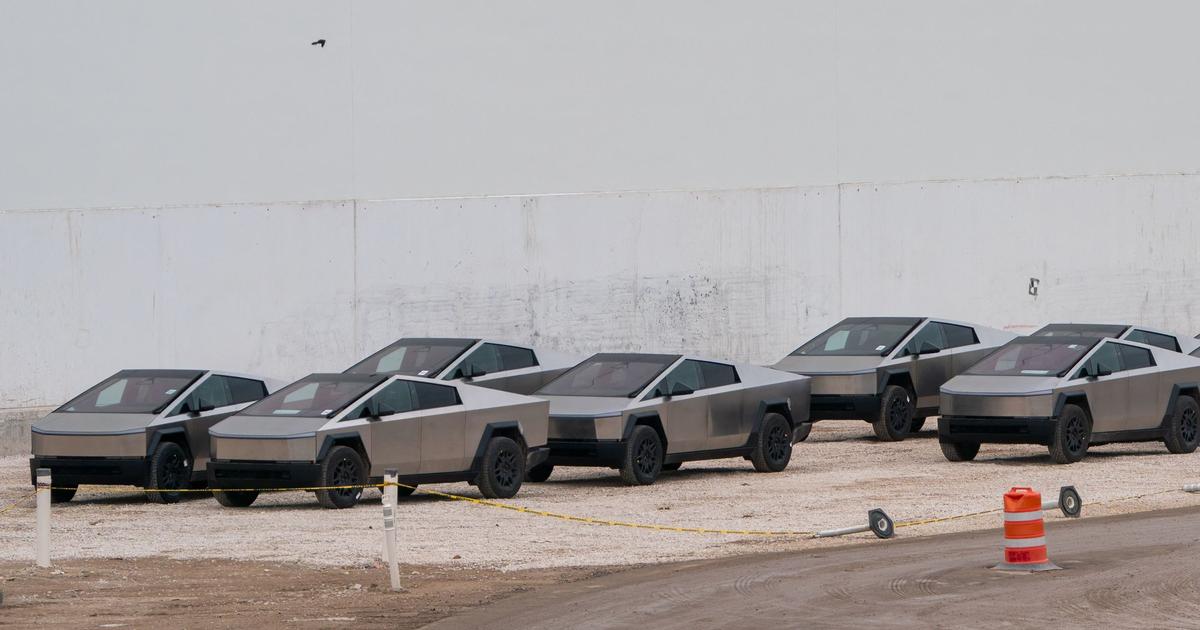On October 28, 2021, a gear was set in motion that has not stopped turning.
That day, the founder and head of Facebook, Mark Zuckerberg, described in an hour and a half presentation what his great project for the future would be like: a virtual environment that he referred to as a metaverse and that he conceives as "the natural evolution of Internet".
To underscore the solemnity of his initiative, he closed his intervention by announcing to the world that his company would henceforth be known as Meta.
"Over time I hope we'll be seen as a metaverse company," he said.
The message went deep.
Or so it seems judging by the high expectations that are being generated around something that does not yet exist and we do not know what it will be like, but that already attracts million-dollar investments.
It didn't take Microsoft a week to proclaim itself a candidate to lead the race for the workplace metaverse, starting with offering customizable avatars for its Teams video calling tool.
He underpinned his bet at the end of January with the purchase for 69,000 million euros of Activision Blizzard, the video game company responsible for best-selling titles such as
Call of Duty
or
World of Warcraft.
A movement that the CEO of Microsoft, Satya Nadella, described as "a big step" towards the metaverse, while his new acquisition is in fact dedicated to creating increasingly realistic interactive worlds.
Many other companies have come after.
Technological companies like Niantic, Intel or Epic are trying to develop their own metaverses.
Decentraland already has its own, and the Roblox or Fortnite video games could be described as such.
The market is also betting, because Apple is also preparing its landing in this business.
Some distribution brands, such as Nike or Gucci, organize events in virtual environments and develop limited series of products exclusively available in digital format.
The real estate fever has also reached hyperspace, with firms such as Earth2, Next Earth or Superworld dedicated to buying land in the metaverse.
Master's degrees and university courses focused on this new world have even emerged and even some countries, such as the Caribbean island of Barbados, have decided to open an embassy there.
Are we really facing the deal of the century?
Or, on the contrary, do we see live how a bubble similar to that of the dotcoms inflates?
Even assuming that one or more metaverses are developed, is it possible that the consumer will not find reasons to enter that environment?
"From an economic point of view, I see an enormous risk," says Manuel Hidalgo, professor of Economics at the Pablo de Olavide University in Seville and at the Esade Center for Economic Policy.
“Before, someone would design a combustion engine and then business applications would come up, like cars.
With the metaverse it happens the other way around: first I tell you how it is going to be and then, when you invest, I will develop it.
millionaire expectations
That is the message that is getting through, at least from Meta.
"The transformation we are launching may have a greater impact on our lives and on the economy than the smartphone has had in the last 10 years," the company's vice president for southern Europe, Laurent, told EL PAÍS. Solly, the day after Zuckerberg's announcement.
When the young tycoon presented his idea of the metaverse to the world, Bloomberg Intelligence put numbers to it: he estimated that he could move an 800,000 million dollar business by 2024. Citigroup analysts have made that figure obsolete.
According to a recent report by the bank, its market could account for between 8 and 13 billion dollars by 2030.
Gartner forecasts that, by 2026, 25% of the population will spend at least one hour a day in this virtual universe to work, shop, learn, interact or entertain.
Citi believes the potential range of users is 5 billion people, more than half of humanity.
Analysts are not alone.
Many entrepreneurs already believe it.
An Accenture study, based on 4,600 interviews with executives from 35 countries, reveals that 71% of them believe that it will have a positive impact on their organization.
And, although half a year after Zuckerberg's announcement we are still not sure what exactly the metaverse is, 42% think it will be a groundbreaking technology.
There is no consensus definition of the metaverse, a name moreover taken from Neal Stephenson's novel
Snow Crash
, a 1990s cyberpunk hit.
There is not even a single space, although Zuckerberg wants his to prevail.
There was already an attempt to bring this virtual world to homes just two decades ago: it was called Second Life, it attracted large investments and not a few headlines, and today the sleep of the righteous is sleeping.
The concept is based on the idea of combining the physical and virtual worlds in an immersive way, through virtual reality or augmented reality.
They are not new technologies, but the increasing speed of the internet that 5G promises and technical advances have greatly improved the experience of putting on 3D glasses.
Nothing to do with what was offered in Second Life: trying Horizon, from Meta, with the Oculus Quest 2 glasses (also from Meta), gives a feeling of vertigo when you walk through a gorge and see the fall or blind your eyes if you look towards the sun that adorns the scenery we visit.
sense of reality
Some companies are working on haptic garments that allow the pressure to be reproduced in the body when someone (an avatar) grabs you in that kind of Matrix or if you crash into something.
The virtual reality glasses that Meta is preparing, which will improve the Quest 2 that it already has for sale for about 300 dollars, will incorporate gaze sensors.
This will improve the experience even more, since it will allow the graphical quality of everything that is away from the focal center of the field of view to be diluted.
It will reduce the sensation of dizziness, but it will also allow Meta to collect invaluable data, such as what catches our attention and for how long.
Facial, lip and body recognition will take care of observing every movement we make to translate it to the avatar (it remains to be seen if that information will be used for other purposes).
There are other elements besides the technical improvements and the latency of the Network that have precipitated its arrival.
Cloud computing is expanding rapidly, allowing devices to be smaller and smaller without losing computing power.
The financial system is undergoing a revolution thanks to cryptocurrencies and non-fungible tokens or NFTs, digital payment methods that are ideal for these virtual environments.
Everything is happening at once, and the metaverse promises to channel these innovations.
So what exactly is it?
The Higher Institute for Internet Development (ISDI) proposes, after reviewing the existing literature to date, that one can speak of a metaverse when four characteristics coincide: there must be a spatial/sensorial interface;
that interface should give us access to an immersive world;
in that world, our avatar (the virtual representation of the user) must be able to interact with other avatars and their environment, and there must be native virtual economies.
Some of these elements are already present in video games or online stores.
But until they occur at the same time, it cannot be defined as such.
Zuckerberg himself said at the project's debut that it would take "years, perhaps decades" to be fully ready.
To get hyper-realistic graphics around us requires a lot of computing power and more latency (the time it takes for data to travel from one internet point to another and back) than we have today.
Or what is the same: better infrastructures and products are needed.
There is time until that arrives.
Until then, we will see intermediate phases of implementation: we will enter a space that is not so immersive from our mobile phones and we will experiment with offers that do not meet the four conditions indicated by ISDI, but that are equally new to us.
Some of the trends it proposes are already here.
For example, there are games in which players buy costumes for the characters (skins).
This is one of the expected business routes: it is assumed that users will be willing to invest in making their avatar look according to their tastes.
A young man creates his avatar in the latest edition of Fitur.
Guillermo Gutierrez Carrascal (SOPA Images/LightRocket via Gett)
For Víctor Javier Pérez, coordinator of ISDI's metaverse executive program, investments in this market are housed in two axes.
On the one hand, the big technology companies are developing the
hardware
to make everything work.
On the other, the rest of the companies are generating services for that environment.
“There are many brands that do not understand very well what it is: they want to position themselves there and communicate it quickly.
You have to offer value.
The actions are now brand positioning, the time will come to monetize”, he maintains.
The Spanish company Virtual Voyagers has managed to sneak into the first group.
In 2020 they were recruited by Meta to design an environment in which to host concerts.
“It worked well: it was shown that people could sustain connections of more than an hour and a half as long as it was a social experience.
Meta saw that these activities generate more engagement than video games”, says Edgar Martín-Blas, CEO of the
start-up
.
They are now working on the design of the Vodafone metaverse.
Zara launched a
phygital
collection , a new term that arises from the contraction of
physical
(physical in English) and digital.
That is to say: garments that have both their real and virtual versions.
Nike has gone further and has marketed fully digital shoes such as NFT, digital titles that allow to prove the authenticity and who is the owner of anything found on the internet.
"We are seeing that companies in the
retail
sector use different approaches to enter the metaverse," explains Antonio Calvo, head of distribution and mass consumption goods at SAS.
“On the one hand, investments in their own sales portals, such as Mercadona, which is investing in
start-ups
that are developing in this area.
Others are positioned in third-party spaces, such as
Fortnite
.
And others, like Walmart, invest in different technologies related to NFTs, cryptocurrencies or
blockchain
technology ”, he illustrates.
new habits
Then there is the generational component.
Young people are the ones who play the most with video games that incorporate elements present in the metaverse.
Being a digital native helps to better understand the mechanisms of a virtual environment of this type.
In Fortnite, for example, concerts have been held with audiences only within reach of major sporting events.
Singer Travis Scott came to collect 12 million viewers during a performance in that game, and was seen in the following days by 27 million people.
Now the fights to the death to which users were challenged are not common, as the game originally proposed.
Or not only for that, but also to interact and attend recreational activities.
It also happens that, in Spain, age goes hand in hand with significant differences in income.
“I am a millennial.
Many people of my generation cannot afford to buy a property and choose to acquire assets in the metaverse”, says Ekaitz Cancela, a researcher at the Internet Interdisciplinary Institute (IN3) of the Open University of Catalonia.
“Real estate trading volume in the metaverse in the last quarter has increased by 150%,” he notes.
It is estimated that the total figure last year exceeded 500 million dollars, according to data from the specialized portal MetaMetric Solutions.
"My generation, which has no experience buying houses or art, sees in the metaverse the way to reaffirm itself as an aspirational middle class," says Cancela.
The real estate aspect is one of the most striking of the phenomenon.
The case of Gamium is illustrative.
A group of entrepreneurs from Barcelona linked to the world of cryptocurrencies and blockchain, the technology that makes them possible, decide to set up a
start-up
to create their own virtual space.
They have an underlying idea: they want to develop a unique digital identity that allows them to enter not only their space, but also those of other companies without having to change users.
To see if their bet is backed up, they put virtual land up for sale in the world they've created.
In less than a month they exceed a million dollars.
“We anticipate that there will be constant economic activity within the metaverse.
In reality, it is a world that coexists parallel to the physical world and that can be monetized in infinite ways”, says Alberto Rosas, co-CEO of the
start-up.
Respond from Bali, Indonesia, an internationally known destination for digital nomads.
“You can charge a commission for each transaction that is made.
You can sell clothes and items for your avatar, create exclusive games that you can only access if you pay, or monetize through ads in the metaverse itself.”
All that will come (or not).
But, for now, the money is made in a way that is familiar to us in Spain: marketing (or speculating) with the land.
Exclusive content for subscribers
read without limits
subscribe
I'm already a subscriber

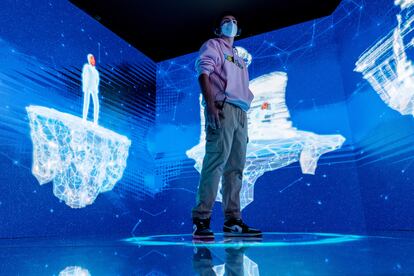

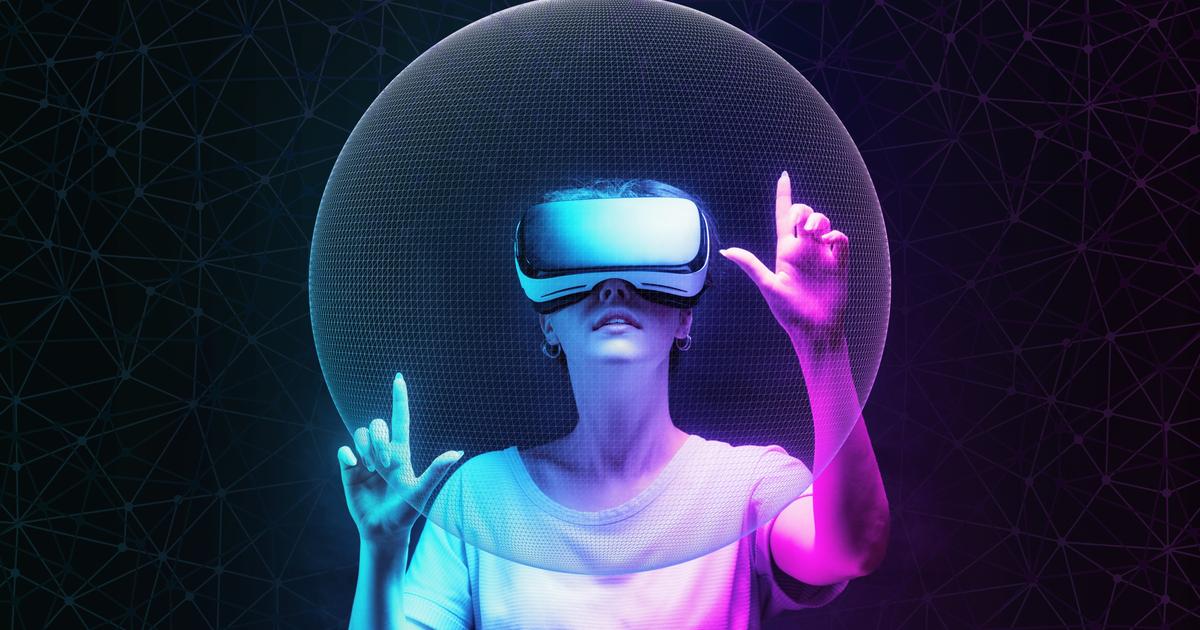
/cloudfront-eu-central-1.images.arcpublishing.com/prisa/OZBU6BSLB5EBTC2UCTE4Y2RDDI.jpg)

